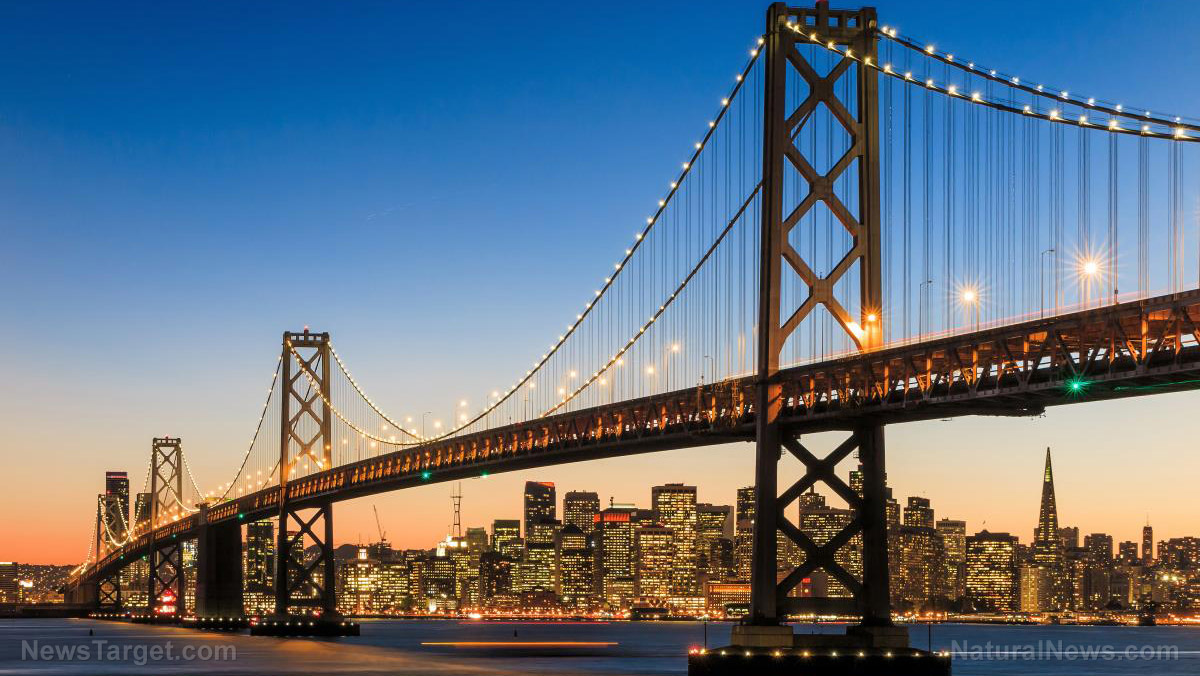
Containerized trades through Chinese ports account for as much as 40 percent of all global container trades. The country is also home to the first and third busiest shipping container ports in the world: the Port of Shanghai and the Port of Ningbo-Zhoushan.
This means that even slightly unnatural levels of congestion in these ports have global ramifications, especially since many of China's primary trade routes lead to Northern Europe and America's West Coast. (Related: Supply chain issues, soaring food prices wreak havoc on US economy #EmptyShelvesJoe.)
According to data obtained earlier this month by supply chain technology company Project44, there were approximately 386 ships anchored outside or at the terminals in Shanghai and Ningbo-Zhoushan. This is in addition to the estimated 228 cargo ships and 45 container vessels already docked at those two ports.
The number of shipping containers in Shanghai and Ningbo-Zhoushan that miss their scheduled sailings shows the enormity of the problem. As much as 41 percent of shipping containers in Shanghai have been delayed. For Ningbo-Zhoushan, that number is at 36 percent.
This problem is occurring in ports all over the country. In the Port of Hong Kong, the eighth busiest shipping container port in the world, 37 percent of shipping containers are delayed.
"When there are cargo rollovers due to vessel space capacity, overbooking, blank sailings, etc., additional costs will be incurred by way of port costs which contributes to increases in freight rates," writes a supply chain expert from Project44.
"The delays caused by cargo rollovers also affect production and delivery patterns at the destination ports as customers who have placed orders for raw materials for manufacturing or retail goods for consumers cannot get their goods in time."
Josh Brazil, vice president of marketing at Project44, describes the current bottlenecks in the supply chain as a "global whiplash effect."
"We can expect these growing backlogs across Chinese manufacturers and ports to exacerbate imbalances at U.S. and European ports," says Brazil.
Some of the problems plaguing China's ports include the country's ongoing Wuhan coronavirus (COVID-19) pandemic. The country's ports also have significantly fewer workers during the first week of October due to Golden Week, a week-long national holiday celebrating the creation of the communist nation.
The Shanghai and Ningbo-Zhoushan ports were also forced to close down in mid-September for three days due to the impact of Typhoon Chanthu. The ongoing energy crisis in China caused by coal shortages and the communist government's strict rationing of electricity has also hampered efforts to decongest the ports.
"As it becomes increasingly hard to get inventory from factory floors to end-consumers, competition for shipping capacity will heat up," says Brazil. "At this point, pretty much everybody is feeling the pain. The challenge is less about achieving full inventory – that ship has sailed – and more about adapting to, and planning for future disruption."
US ports experiencing intense congestion
The situation in the United States is not better. It was reported several weeks ago that there were a record-breaking 73 ships anchored in San Pedro Bay, off the coast of America's two largest ports – the Port of Los Angeles and the Port of Long Beach, respectively. Together, they account for approximately 40 percent of all shipping containers entering the U.S.
Those cargo ships were unable to dock and start unloading their cargo because the ports were filled up with shipping containers.
On Wednesday, Oct. 13, President Joe Biden announced a plan to try to ease the burdens experienced by the Los Angeles and Long Beach ports. This mainly involves forcing port operators and companies like FedEx, UPS, Walmart and Home Depot to extend their operating hours, sometimes up to 24 hours a day.
The Port of Long Beach already shifted to this kind of operating schedule in September. The Port of Los Angeles announced on Wednesday that it was following suit. This announcement was followed by similar proclamations by the other companies listed above that they will expand their operating hours so that they can make deliveries at any time of the day.
But ramping up operating hours for ports alone will not solve the supply chain crisis.
The massive labor shortage plaguing America right now means a lot of industries that the ports rely on to help decongest their docks need workers. For example, there is a shortage of long-haul truck drivers. This will negatively impact how quickly the ports of Los Angeles and Long Beach can be opened up.
The White House also announced that it would not be providing port operators with any federal funding to help them pay their workers to keep the ports open for longer hours. This could potentially cause trouble with the powerful International Longshore and Warehouse Union, which represents thousands of workers at the ports and may not be willing to work if port authorities do not have the resources to pay them off.
"The supply chain is, essentially, in the hands of the private sector, so we need the private sector to step up to help solve these problems," says an administration official.
The ports of Los Angeles and Long Beach are not the only ones affected by the global supply chain crisis. One report states that as many as 80,000 unloaded shipping containers are stacked up on the docks in the Port of Savannah, the country's fourth-largest port.
Learn more about how the supply chain crisis is affecting the entire world by reading the latest articles at MarketCrash.news.
Sources include:
Please contact us for more information.




















